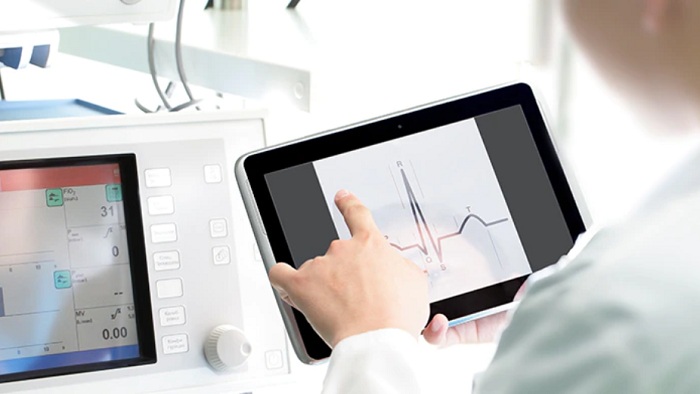“The new dawn of maintenance services is already here. The servicing of the future isn’t about reducing downtime, it’s about enabling healthcare systems to make full – and evolving – use of their sophisticated equipment and technology investments, when they want and how they want. With predictive maintenance, we are able to prevent issues from happening before they happen to continuously fine tune and optimize workflows and usage, enabling more patients to be treated. And our flexible maintenance agreements, have the evolving strategic priorities of our customers and their patient’s care at heart. This is the age of Operational Intelligence, where we combine people, process and technology to reinvent operational efficiencies within healthcare facilities.”
Or so John Ngoh, Customer Service Delivery Leader Singapore.
Every piece of medical equipment in a hospital is vitally important. Each solution allows healthcare providers to offer reliable and effective care, efficiently diagnosing and treating their patients as fast as possible; supporting the work of their clinicians and staff, while keeping their standards of care high and costs low. Keeping them working efficiently and effectively is a delicate balancing act. Large fleets of MRs and X-rays all require attention through careful monitoring and maintenance to ensure they are fit for purpose.
Critical medical equipment such as MRIs and CTs are incredibly complex, serve very specific health needs and are expensive to operate, with the cost of maintenance borne by both parties. Healthcare providers already face immense, and growing, financial pressures; wide spread digital transformation has been slow and equipment that risks their ability to deliver care and can significantly impact their operations. This translates into a need to get more from medical equipment and a culture of zero downtime, to avoid patient treatment delays and additional costs.
With less time to calibrate and fix important equipment, diagnosis of equipment failure needs to be proactive and predictive; no longer reactive. Which is why maintenance is now of increasing strategic importance: hospitals need fast, confident and proactive responses to equipment downtime to enable it to be always available and first time right fixes of any issues.
John Ngoh, Customer Service Delivery Leader Singapore provides his predictions of the innovations and changes rapidly transforming maintenance beyond break fix . His highlights to note encompass proactive and predictive maintenance, to AI, knowledge management, flexible service agreements and beyond:
Future trends transforming the landscape of healthcare equipment maintenance
The shift to proactive maintenance
Through the advent of AI and data-driven technologies, the shift has begun from reactive to proactive maintenance, and, in time, to predictive maintenance. Through remote monitoring, engineers can proactively assess equipment and respond before it degrades. Increasingly, more predictive capabilities will enable engineers to know when a system is going to degrade and automatically order the necessary parts for repair. Making the future of maintenance more predictable and proactive and keeping unplanned downtime to zero.
How the COVID-19 pandemic boosted remote monitoring
Of course though, the shift towards more remote monitoring of medical equipment was also fast-tracked early in 2020, when hospitals were forced to minimize access to personnel during the Covid-19 outbreak. One of the pandemic’s side effects was the instant boost it gave to connectivity. With critical equipment needed to diagnose patients with Covid-19, hospitals that had delayed digital transformation were suddenly forced to adapt.
Why predictive, proactive maintenance is already a game-changer
The great leaps forward in maintenance and supply chain management were led by the aviation industry where manufacturers monitor an engine’s performance in real-time but the health care industry had until now, lagged behind.
Since 2015, Philips maintenance has been able to intervene before systems degrade. Rather than waiting for upkeep, medical equipment with increasing numbers of sensors will self-diagnose an issue faster and act to prevent future performance issues.
Predictive maintenance is such an exciting prospect because a piece of medical equipment which understands its own lifecycle, can self-assess its own health and degradation, and communicate with other devices — or fleets of medical equipment — will give hospitals the option of a proactive, automated maintenance model.
For field service engineers, the future will be more and more visual. Rather than searching for answers and waiting for documents to load, they will increasingly have access to an ever-growing repository of information from thousands of other maintenance cases at their fingertips. Field service engineers will become experts in everything, because whenever they don’t know something specifically, they can connect with someone anywhere in the world who does have the knowledge and quickly close the gaps.
Knowledge Management and AR applications in healthcare will also help patients and doctors in ways we couldn’t imagine a few years ago, making complex tasks easier to achieve, visualizing medical information for surgical procedures or enhancing medical training. AR will also guide engineers as they diagnose and repair equipment and devices, giving them access to a wide range of information and knowledge in real-time.
From “spare part”, to invisible fix. How service parts are undergoing a significant period of innovation.
The process of diagnosing a problem, ordering a service part and having that service part arrive in a timely manner has historically been subject to various barriers. Getting products from a factory or warehouse to distributors or hospital sites around the world as quickly and economically as possible is critical for hospitals, yet fraught with challenges. However, the landscape for service parts has been rapidly transforming, with automated logistics optimization and digital technology making the process far more immediate and less manpower intensive.
Looking into the future. What will AI-enabled maintenance look like?
As data volumes in hospitals continue to grow, with information from more digital platforms, medical devices, wireless sensors, and billions of mobile phones; understanding how to connect fleets of equipment and ensure their performance is strategically advantageous. By leveraging more algorithms in hospital equipment fleets, opportunities will arise to design and develop new operating models such as pay-by-use or subscription-based services, where service activities can be dependent on the number of patients a hospital is treating. The advent of more AI-enabled maintenance will alter future product designs and operating models and, as AI capability grows, it will in time influence the way products look and respond; self-diagnosing will be the norm.
Contracted to win. Unlocking “lock ins” through the evolution of maintenance contracts
The evolution of maintenance, of course, is also about the evolution of the service agreement, also known as the maintenance contract. Gone are the days of signing on the dotted line and being tied into to a service agreement that might not grow with your needs, as part of its partnership model, Philips Maintenance Services is innovating service agreements to encompass shared risk and increasing flexibility.
Interested to know more?
Let’s talk. Even better, let’s collaborate
Philips Maintenance Services helps you drive performance, usability and interoperability by keeping your technology reliable, up to date and cost effective.






















